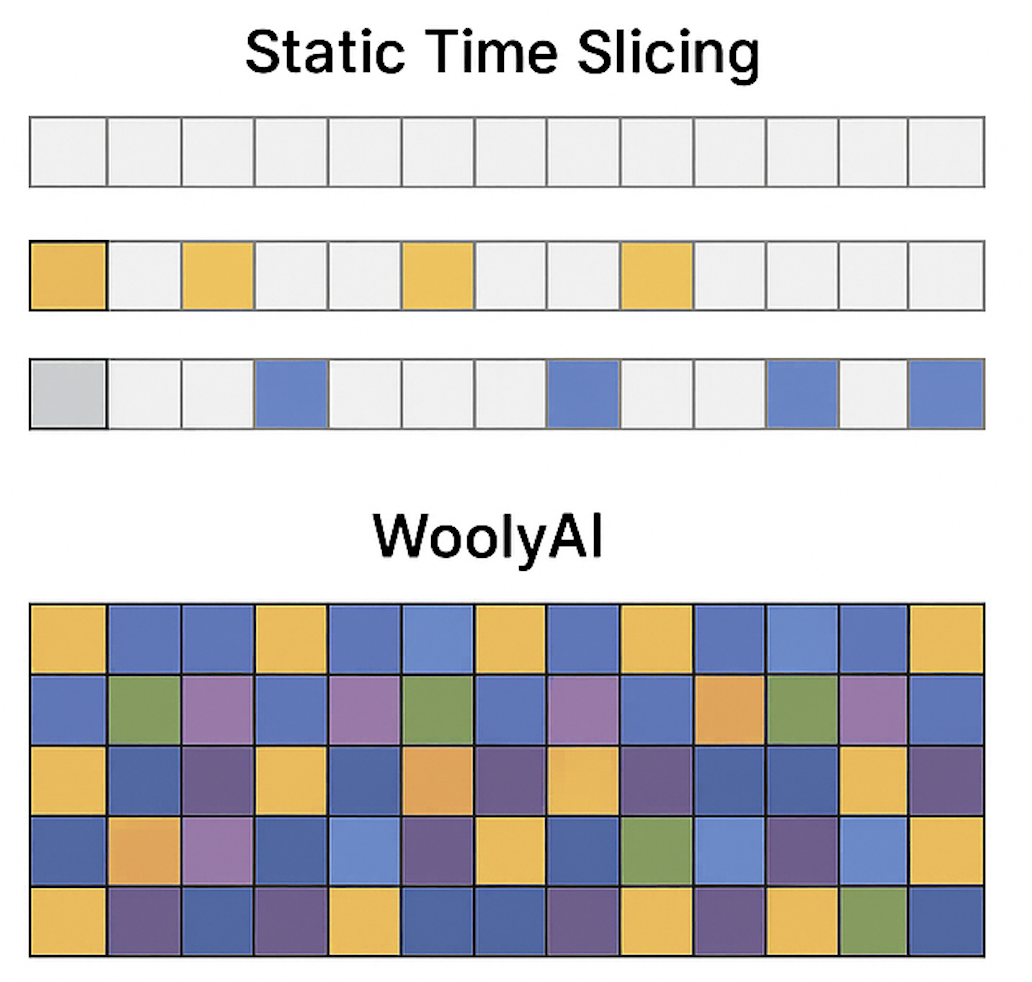
Unlike traditional GPU infrastructure management approaches, which rely on static time-slicing or static partitioning, WoolyAI JIT compiler and runtime stack can measure and dynamically reallocate GPU compute cores across concurrent ML kernels based on real-time usage, workload priority, and VRAM availability. This results in 100% utilization of GPU compute cores consistently.


In today’s setups, CUDA containers must run on the GPU hosts, which locks developers to scarce machines, exposes keys and data on shared accelerators, complicates patching/drivers, and makes multi-tenant control messy. With Wooly abstraction, you build and run unchanged PyTorch code inside a CPU-only Wooly Client container. At the same time, the CUDA kernels are sent as Wooly Instruction Set (WIS) to GPU servers running the Wooly Hypervisor, which JIT-compiles to native CUDA/ROCm.
Nvidia Hardware
AMD Hardware
GPU independence
Run the existing CUDA project containers on both Nvidia and AMD with no code changes
Higher ML Ops team productivity
Unified ML Pipelines that are independent of driver, runtime mismatch, and inconsistencies
Faster deployment of ML apps
Avoid hitting the GPU availability wall by packing more jobs per GPU during experiment, eval without infrastructure bottlenecks
Create a high-efficiency GPU pool
Run your models on the CPU only while real GPU work executes on a shared, high-efficiency GPU pool
Drop in integration
Drop-in replacement for existing ML Containers, fits in with K8, Ray workflows
3x more utilization per GPU
Co-locate and run many more jobs per GPU with strict priority and fair-share rules
Serve 3x more ML teams (training, inference, fine-tuning, RL, vision, recommender systems) from a shared GPU host pool without GPU hard partitioning and with a predictable execution SLA.
No need to orchestrate and run ML containers on GPU hosts. Manage and scale ML pipelines on CPU-only infrastructure with remote GPU execution from a shared GPU pool.
Run many more independent LoRA adapter applications per GPU without running into the VRAM limit.
Run many concurrent CI/CD pipelines on single GPUs in an isolated compute/memory sandbox, the scheduler dynamically adjusts GPU cores and memory allocation to meet SLA and job priority.
Expand Nvidia only cluster with cost efficient AMD GPUs without any changes to existing CUDA ML workloads. Single unified Pytorch containers for both Nvidia and AMD with hardware aware optimization, centralized dynamic scheduling across mixed GPU clusters.
Wooly AI was created by a world-class virtualization team with decades of experience developing and selling virtualization solutions to enterprise customers.